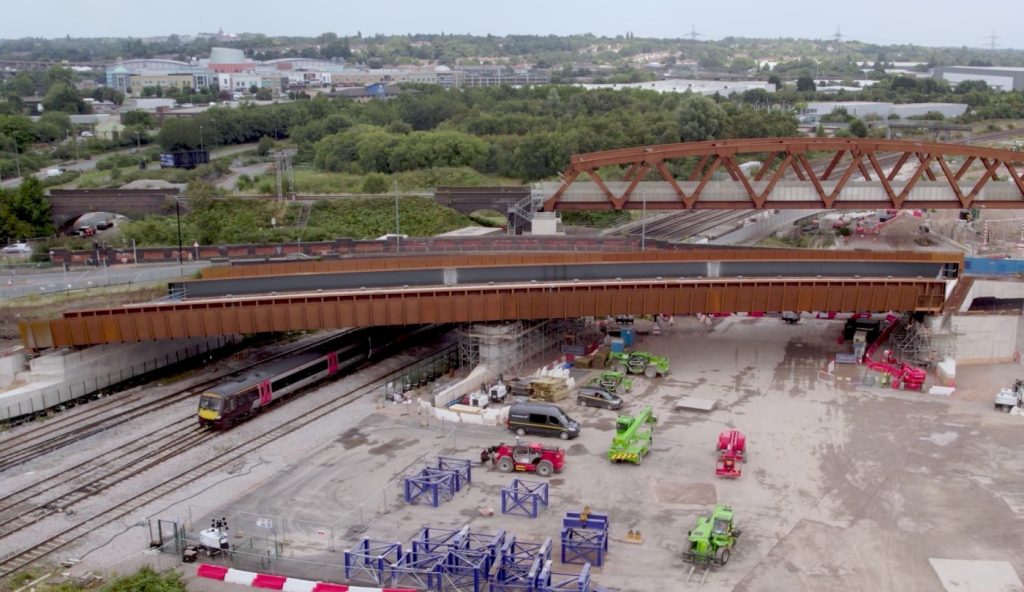Balfour Beatty VINCI, working for High Speed Two (HS2), has installed a 1,600-tonne (t) bridge over the Birmingham to Derby railway line in Saltley, Birmingham, UK.
The Aston Church Road bridge measures 84m in length and 21m in width and sits above the new HS2 tracks, accommodating high-speed trains as they enter and exit Birmingham.
The bridge installation, a collaboration between Balfour Beatty VINCI and Mammoet, was completed during a Network Rail blockade and was handed back to Network Rail five hours ahead of schedule.
The method of construction, which involved building the bridge adjacent to the railway and moving it into place over a single weekend, reduced the potential disruption to rail services.
Mammoet used two 128-wheeled self-propelled modular transporters for the bridge's relocation.
The transporters moved across a matting bed, provided by Pod-Trak, to ensure a level crossing over the tracks.
Balfour Beatty VINCI Saltley Area project manager Dan Binns said: “This was a complex operation, made even more challenging because the bridge needed to be driven over four existing network rail lines, requiring years of precise planning and preparation.
“We purposely chose to move the bridge on wheels, so it could be built offline first, then moved across in just five hours, greatly reducing the impact on rail passengers.”
The bridge's design, a product of a design joint venture between Mott MacDonald and Systra for Balfour Beatty VINCI, reflects local community input.
Features include a wide pedestrian walkway, an LED lighting strategy for enhanced safety, and new woodland planting.
Public feedback also led to the substitution of stainless steel with weathered steel panels, improving aesthetics and the pedestrian experience.
The composite bridge consists of a concrete deck supported by steel girders, with glass-reinforced plastic panels serving as permanent formwork.
MPB, a concrete frame specialist in the UK, was responsible for the reinforced concrete works.
Preparations for the bridge move included the construction of a 9,000m² platform and 62 piles to support the concrete structures.
Approximately 4,000m³ of concrete and 490t of reinforced steel were used in the construction process.









